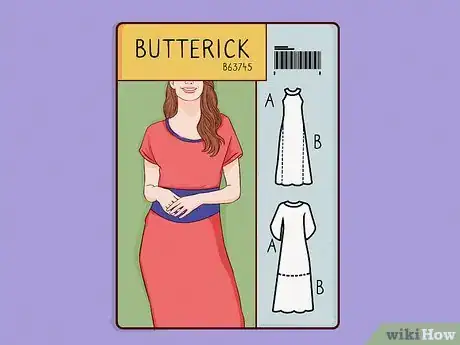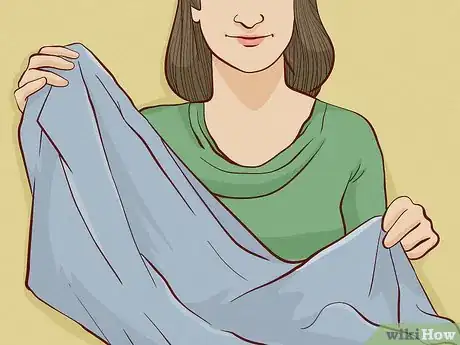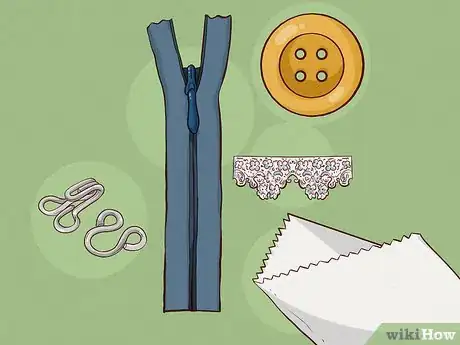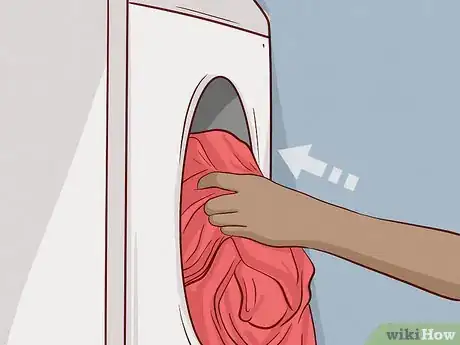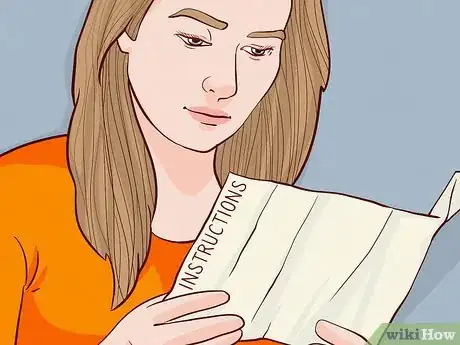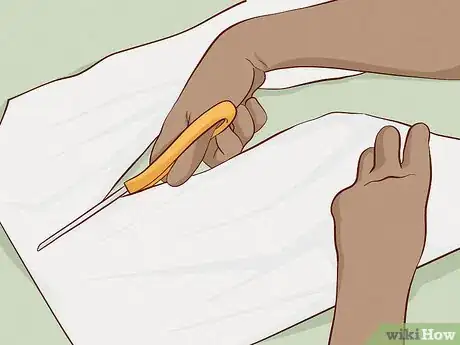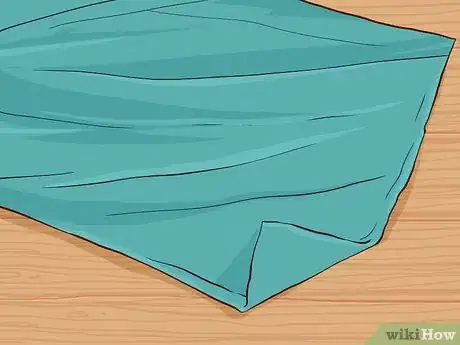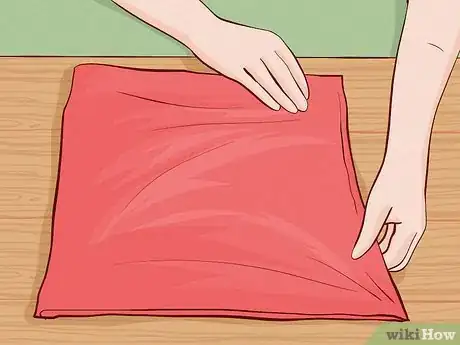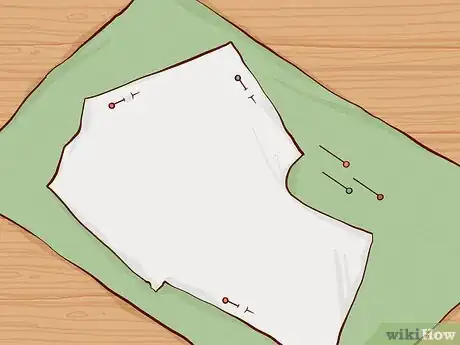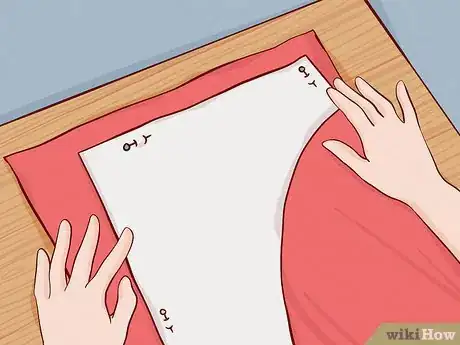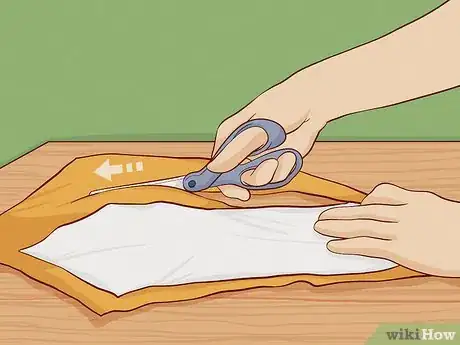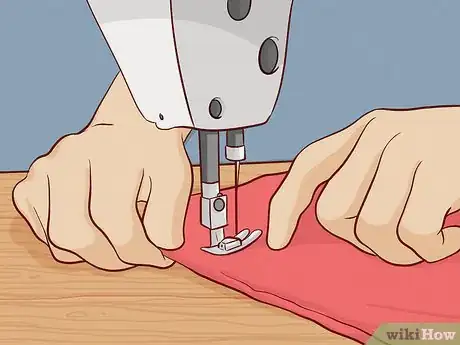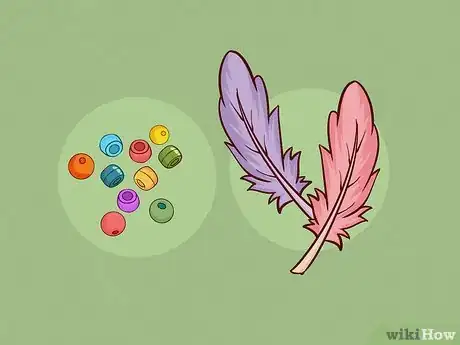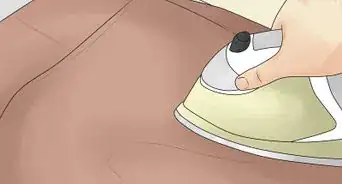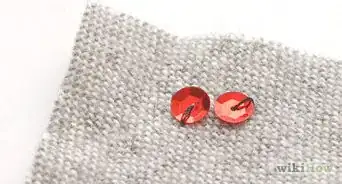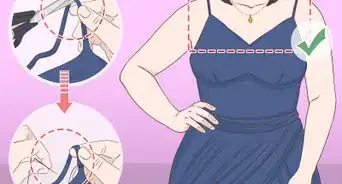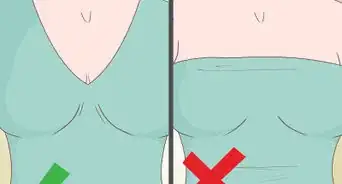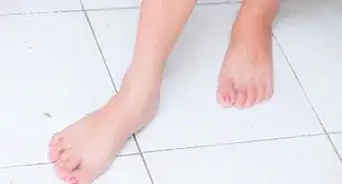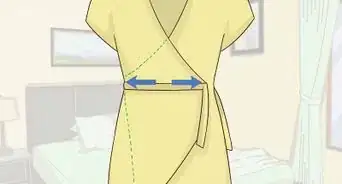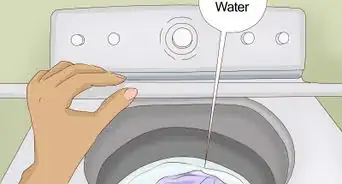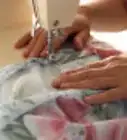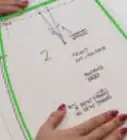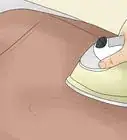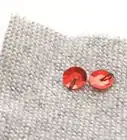X
This article was co-authored by Lois Wade, a trusted member of wikiHow's volunteer community. Lois Wade has 45 years of experience in crafts including sewing, crochet, needlepoint, cross-stitch, drawing, and paper crafts. She has been contributing to craft articles on wikiHow since 2007.
This article has been viewed 311,708 times.
Learn more...
The prom dress of your dreams can cost a lot more than you are willing to pay. But with the some patience, a small amount of money for basic supplies and a little sewing experience, you can create the dress of your dreams for a fraction of the price. Here is wikiHow to make a prom dress.
Steps
-
1Purchase or make a pattern in your height and size. These can be bought at fabric stores. Every Butterick, Kwik Sew, McCall's, Simplicity and Vogue pattern comes with sewing instructions that most seamstresses can follow. Not all patterns or sewing instructions are created equal. Butterick, Kwik Sew, McCall's and Simplicity tend to have the best step-by step instructions in their packages, while Vogue instructions tend to be geared for the experienced seamstress/tailor.
-
2Purchase material for your dress. Generally, the sewing itself is not the difficult part of doing a prom dress. The hard part is dealing with the unique characteristics of the special fabrics you are using..
- Pay close attention to the fabric recommendations on the pattern envelope. Some fabrics will work much better than others for a particular project and the pattern envelope will state this for you.
- Take care with your material. Most prom dress materials (satin, lace, silk, velvet) are dry-clean only and have other special care instructions (cool iron only, etc). Some also have the annoying characteristic of being slippery to handle (need a lot of pins), fibers "catch" and pull when sewing (your machine may need a new, sharp, needle), or they fray easily (tape or iron interfacing along all raw edges before assembling the garment). These difficult to manage characteristics are why we like the look and feel of the material, as well as why dresses made from these materials are so expensive and difficult to make![1]
- Purchase the recommended yardage plus half a yard. Patterns usually allow plenty of yardage, but it's always nice to have a little extra "just in case" you cut a piece wrong the first time. If you do everything correctly, you can always use the extra fabric to make a matching purse, scarf, or similar item.
Advertisement -
3Purchase all necessary notions such as hooks, eyes, zippers, buttons, lace, hemming lace, Interfacing, etc. in advance. Check the pattern for a list of needed items. The last thing you need in the middle of a major project is yet another trip to the store.
-
4Launder your materials according to their care instructions. If using a dry-clean only fabric, you may omit this step (unless it smells odd, in which case, take it to the dry cleaners before you start to cut it).
-
5Read through your instructions.
-
6Cut out the pattern pieces that you will need. These come in large sheets of tan tissue, with several pieces printed per sheet. You will need to cut out the ones you will use and put the others away.[2]
-
7Lay out your cloth on a smooth clean surface.
- Pay close attention to the cutting recommendations given in the pattern. Some recommended layouts will specify that the material is to be folded in half lengthwise or perhaps laid out in a single layer. Pay attention or you could end up with less of a dress than you expected!
- If you do not have a large table, you can also use your floor (cleaned first!) or a cutting board. Folded cardboard sheet with inch markings on it are available at most sewing centers for around $10-$15 USD.
-
8Lay out your fabric according to the pattern recommendation.
-
9Pin your pattern piece(s) carefully in place.
-
10Double check your pattern positioning, the number of cloth layers, the number of pattern pieces you are cutting, etc.
-
11Carefully cut out the pieces, following all pattern marks, such as darts, etc.
-
12Sew according to instructions given in the pattern. The pattern companies generally have excellent sewing instructions with illustrations for that specific pattern in the envelope and all you need to do is follow the instructions carefully and to the letter to get a decent result.
-
13An optional step is to add your own design with beads, feathers and other fun extras. These things will probably need to be hand sewn on using thread that is the same color as the dress.
Advertisement
Community Q&A
-
QuestionCould I use fabric glue in place of sewing?
 Community AnswerYou could, however, the dress will be less resilient and is more likely to rip (or worse).
Community AnswerYou could, however, the dress will be less resilient and is more likely to rip (or worse). -
QuestionHow do I know how thick to make the fabric? And how do I get the desired design I want if it's my first time making a dress?
 Community AnswerPay attention to the fabric recommendations on the package of the pattern you choose. Don't use fabric that is too thick or you will likely get hot, especially with dancing, blushing, etc. Don't make it too thin either, or it might be see-through or the fabric may seem cheap or inferior. Try practicing with lesser quality materials, then once you are confident enough, make your prom dress.
Community AnswerPay attention to the fabric recommendations on the package of the pattern you choose. Don't use fabric that is too thick or you will likely get hot, especially with dancing, blushing, etc. Don't make it too thin either, or it might be see-through or the fabric may seem cheap or inferior. Try practicing with lesser quality materials, then once you are confident enough, make your prom dress. -
QuestionIs it possible to sew this prom dress in under 2 hours?
 Community AnswerYes, you would need fast hands and a working machine. However, without adding a cuff or neckline, you could complete it in an hour and a half.
Community AnswerYes, you would need fast hands and a working machine. However, without adding a cuff or neckline, you could complete it in an hour and a half.
Advertisement
Warnings
- Pins, needles, and scissors are sharp. Handle with care.⧼thumbs_response⧽
Advertisement
Things You'll Need
- Sewing machine (Or if you do not have one, use a needle and thread yourself)
- Pattern
- Fabric and notions for the pattern you choose
References
About This Article
Advertisement
